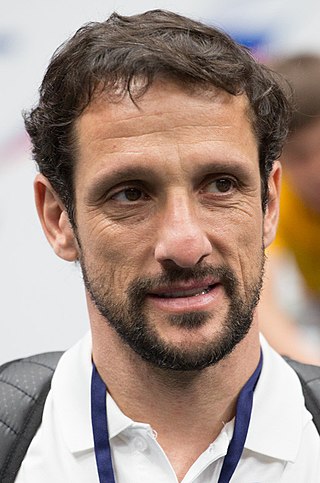
Sidereus Nuncius is a short astronomical treatise published in Neo-Latin by Galileo Galilei on March 13, 1610. It was the first published scientific work based on observations made through a telescope, and it contains the results of Galileo's early observations of the imperfect and mountainous Moon, of hundreds of stars not visible to the naked eye in the Milky Way and in certain constellations, and of the Medicean Stars that appeared to be circling Jupiter.

A refracting telescope is a type of optical telescope that uses a lens as its objective to form an image. The refracting telescope design was originally used in spyglasses and astronomical telescopes but is also used for long-focus camera lenses. Although large refracting telescopes were very popular in the second half of the 19th century, for most research purposes, the refracting telescope has been superseded by the reflecting telescope, which allows larger apertures. A refractor's magnification is calculated by dividing the focal length of the objective lens by that of the eyepiece.

Juliano Haus Belletti is a Brazilian football coach and former player who mostly played as a right-back. He is currently an head coach at Barcelona Atlètic.

The Galileo affair began around 1610 and culminated with the trial and condemnation of Galileo Galilei by the Roman Catholic Inquisition in 1633. Galileo was prosecuted for holding as true the doctrine of heliocentrism, the astronomical model in which the Earth and planets revolve around the Sun at the centre of the universe.

Museo Galileo is located in Florence, Italy, in Piazza dei Giudici, along the River Arno and close to the Uffizi Gallery. The museum, dedicated to astronomer and scientist Galileo Galilei, is housed in Palazzo Castellani, an 11th-century building which was then known as the Castello d'Altafronte.

Bartolomeu Velho was a sixteenth-century Portuguese cartographer and cosmographer.

Giovanni Valentino Mattia Fabbroni was an Italian naturalist, economist, agronomist and chemist.

Villa il Gioiello is a villa in Florence, central Italy, famous for being one of the residences of Galileo Galilei, which he lived in from 1631 until his death in 1642. It is also known as Villa Galileo.

The Domus Galilaeana is a cultural and scientific institute and library, dedicated to the history of science, located in via Santa Maria #26, in Pisa, region of Tuscany, Italy. Currently, the Domus Galilaeana houses a library with more than 40,000 books and important files relating to scientists of the 20th century.

Galileo di Vincenzo Bonaiuti de' Galilei, commonly referred to as Galileo Galilei or mononymously as Galileo, was an Italian (Florentine) astronomer, physicist and engineer, sometimes described as a polymath. He was born in the city of Pisa, then part of the Duchy of Florence and present-day Italy. Galileo has been called the father of observational astronomy, modern-era classical physics, the scientific method, and modern science.

The Tribune of Galileo is a Neoclassic architectural addition, built to commemorate the famous Florentine scientist, Galileo Galilei and to house some of his scientific instruments.

Boncompagni Ludovisi Decorative Arts Museum, Rome, is the Decorative Arts Museum of the National Gallery of Modern Art of Rome. The Museum is located at Via Boncompagni, 18, near the elegant and historical Via Veneto.

Ibrahim Ibn Saîd al-Sahlì was an Andalusian globe-maker, active from 1050 to 1090.

Vittorio Crosten was an able carver of Dutch origin.
Filippo De Palma was an Italian scientific instrument maker.

Charles-François Delamarche was a French geographer and mapmaker.

The jovilabe is a brass scientific instrument, undated and of unknown maker, currently in the collection of the Museo Galileo in Florence, Italy.

Galileo's objective lens is a specific objective lens held in the Museo Galileo, Florence, Italy. It was used by Galileo Galilei in the Galilean telescope with which he discovered the four largest moons of Jupiter in 1610. The lens has a diameter of 38mm and a gilt brass housing. The frame is made of ebony and ivory and has dimensions of 410mm x 300mm.
The Campani compound microscope is a microscope on exhibit at the Museo Galileo in Italy, thought to have been built by optical instrument maker Giuseppe Campani in the second half 17th century. For a time it was thought to have been built by Italian scientist Galileo Galilei but no longer bares that attribution.

The Tabula Affinitatum is a table of chemical affinities between substances.
















